On the French Riviera, there is no shortage of charming small towns and villages where time seems to flow more slowly, and the surrounding landscapes easily evoke thoughts of the medieval era.
Saint-Paul-de-Vence is one such town. Perched on a picturesque hill, its Old Town is filled with small stone houses, narrow alleys, hidden passages, stairs, and a completely artistic atmosphere that never lets you forget its presence. This is primarily due to the numerous art galleries hiding stunning works by contemporary artists. It was here that I had the chance to see the works of Bruno Catalano and Patrick Hughes in person for the first time. These are two of my favorite contemporary artists, and to be honest, I never expected to encounter their works in Saint-Paul-de-Vence.
The landscapes, which can be admired at almost every turn, are also true masterpieces of nature. It’s hard to name just one or two of the best viewpoints, as while strolling through Saint-Paul-de-Vence, breathtaking vistas appear time and again. On one side, the blue horizon of the Mediterranean Sea, and on the other, the massive peaks of the Maritime Alps. And in between it all, green olive groves, palm trees, and tall, proud cypress trees.
FUN FACT: Just before entering the town and outside the defensive walls, you’ll find a place that is a must-see in almost every Provençal village. I’m talking, of course, about the boulodrome – a small court for playing boules, or la pétanque.
History and Exploring the Old Town of Saint-Paul-de-Vence
Let’s start from the beginning, as the history of Saint-Paul-de-Vence is just as fascinating as its modern-day charm. In ancient times, the area of the current town was first inhabited by the Ligurians, and later by the Romans. The town’s position on a hill was not a coincidence. Hills were considered the most strategic locations for defending the town, as they allowed a clear view of any approaching invaders from a distance.
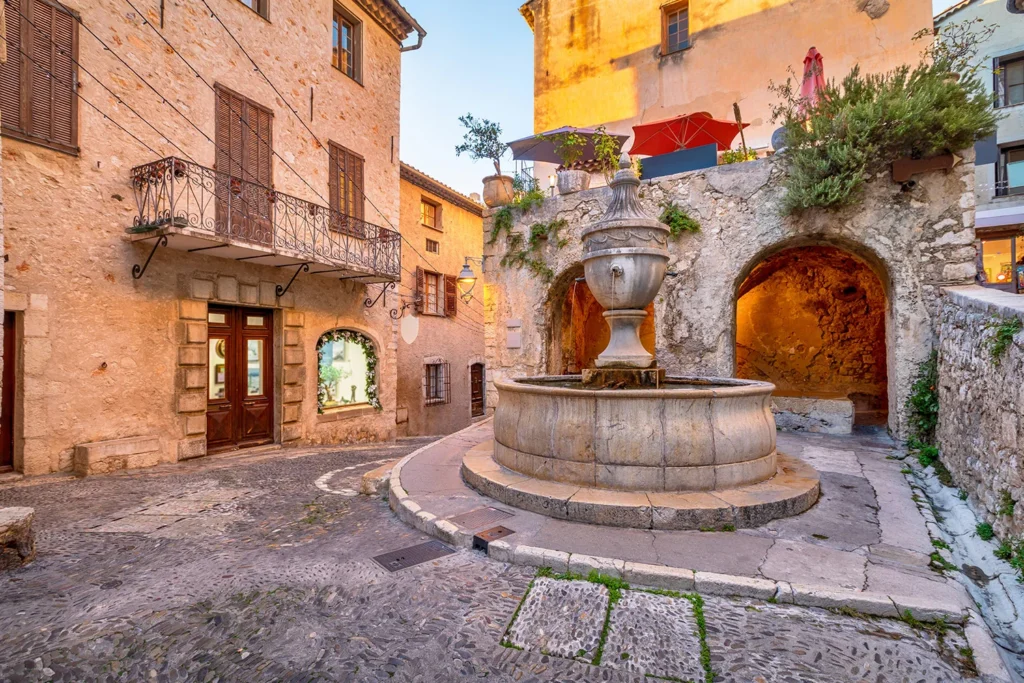
In the Middle Ages, when the surrounding regions came under the control of the Counts of Provence, the town began to play an important role as a border fortress between Provence and the Duchy of Savoy. In the 14th century, defensive walls and towers were built in the town. Two of them, Porte de Vence and Tour de l’Esperon, have survived to this day. These fortifications played a significant role in the centuries that followed, when the town was besieged multiple times by foreign armies.
In the 17th century, the key event was the renovation of the Church of Saint Paul, which was elevated to the status of a collegiate church. The building was expanded and enriched with numerous architectural ornaments. From this period comes, among other things, the Chapel of Saint Clement, decorated with frescoes. Baroque and Rococo influences also found their way into secular buildings, such as the grand residences of the Bernardis and Alziary families, whose facades were adorned with leaf and fruit-shaped friezes, while the interiors boasted intricate stucco work and beautiful fireplaces.
FUN FACT: While exploring the Old Town of Saint-Paul-de-Vence, it’s worth keeping an eye on the ground. In the mid-20th century, a decision was made to pave the streets with a characteristic Provençal mosaic, with the first stones sourced from the Cagnes-sur-Mer coastline.
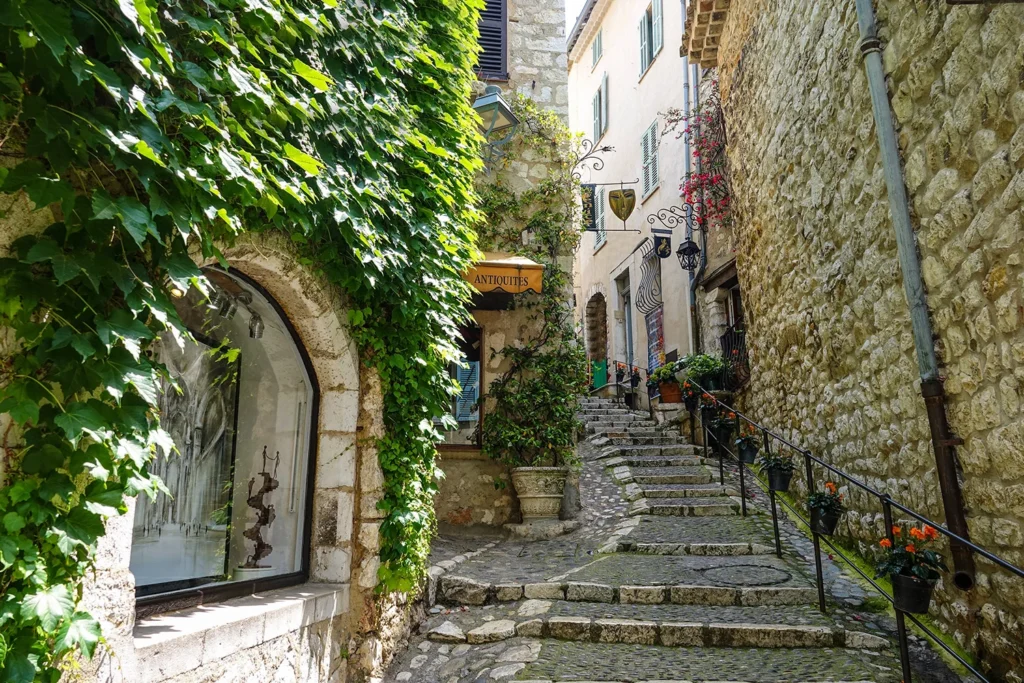
The Artistic Boom and the Famous Colombe d’Or Hotel
In the early 20th century, the picturesque hills of Saint-Paul-de-Vence were covered with colorful flowers, vineyards, and olive trees. Combined with the distinctive light of southern France, these landscapes became a source of inspiration for many artists. Painters like Paul Signac, Raoul Dufy, and Chaïm Soutine were among the first to set up their easels and capture the enchanting Provençal scenery on canvas.
The artistic history of Saint-Paul-de-Vence is also closely tied to the hotel and restaurant La Colombe d’Or. Originally opened in 1920 under the name Chez Robinson, the establishment initially consisted only of a café with an open terrace. The growing popularity of the venue soon led to an expansion, offering a few rooms for rent. Thanks to the openness of the owners and their personal interest in art, the place became a favorite spot for artists, who often paid for their stay and meals with their own artwork.
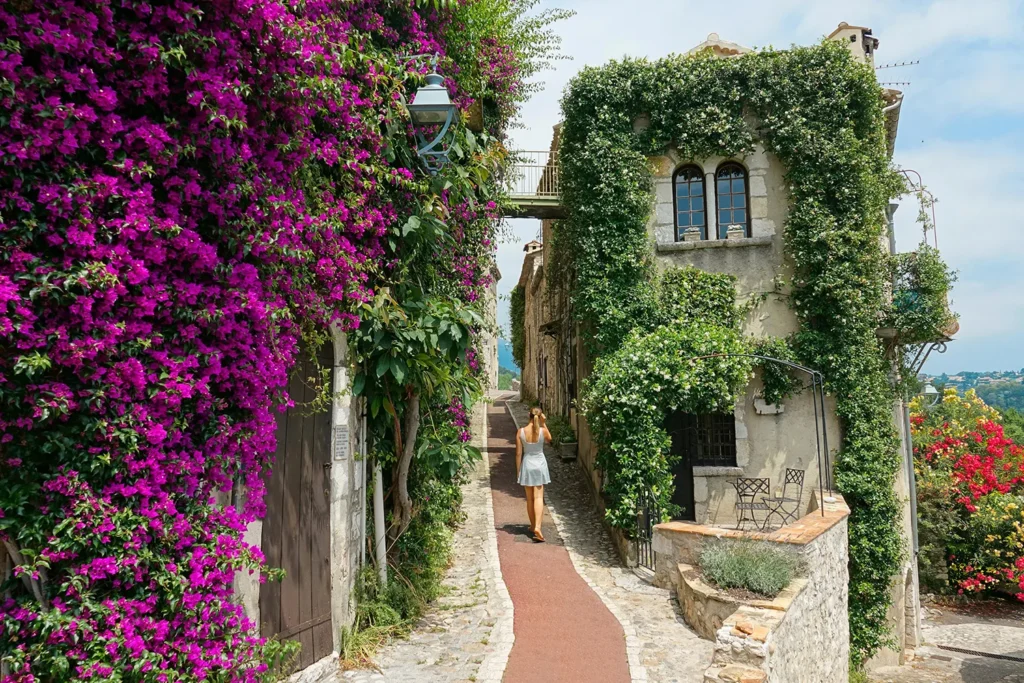
Before long, the walls of La Colombe d’Or were adorned with paintings by artists such as Pablo Picasso, Marc Chagall, Henri Matisse, Georges Braque, and Joan Miró. The fame of the hotel spread far beyond the French Riviera, turning both La Colombe d’Or and the town of Saint-Paul-de-Vence into a haven for artists from all over Europe. Many renowned artists even chose to settle in the town permanently. One of them was Chagall, who spent nearly 20 years of his life in Saint-Paul-de-Vence and was later buried in the town’s cemetery. Hollywood stars also began flocking to the town, particularly during events like the Cannes Film Festival, and continue to do so to this day.
Fondation Maeght
When discussing the artistic side of Saint-Paul-de-Vence, one cannot overlook a must-visit location for any art lover – Fondation Maeght. This is the first independent art foundation in France, established in 1964. Among those involved in creating this exceptional space were artists such as Joan Miró, Marc Chagall, Georges Braque, Alberto Giacometti, Alexander Calder, and Fernand Léger.
The foundation, in line with the vision of its founders, focuses on modern and contemporary art. Its collection includes some of the most important works of European art from the 20th and 21st centuries. In total, there are around 13 000 pieces, which are displayed in both permanent and temporary exhibitions. Many of these works are also loaned to other museums, both in France and internationally.
During the summer, Fondation Maeght often transforms into a cultural venue, hosting concerts, workshops, and screenings. It’s worth taking the time to visit this remarkable place while in Saint-Paul-de-Vence and setting aside a few hours to explore its exhibitions.
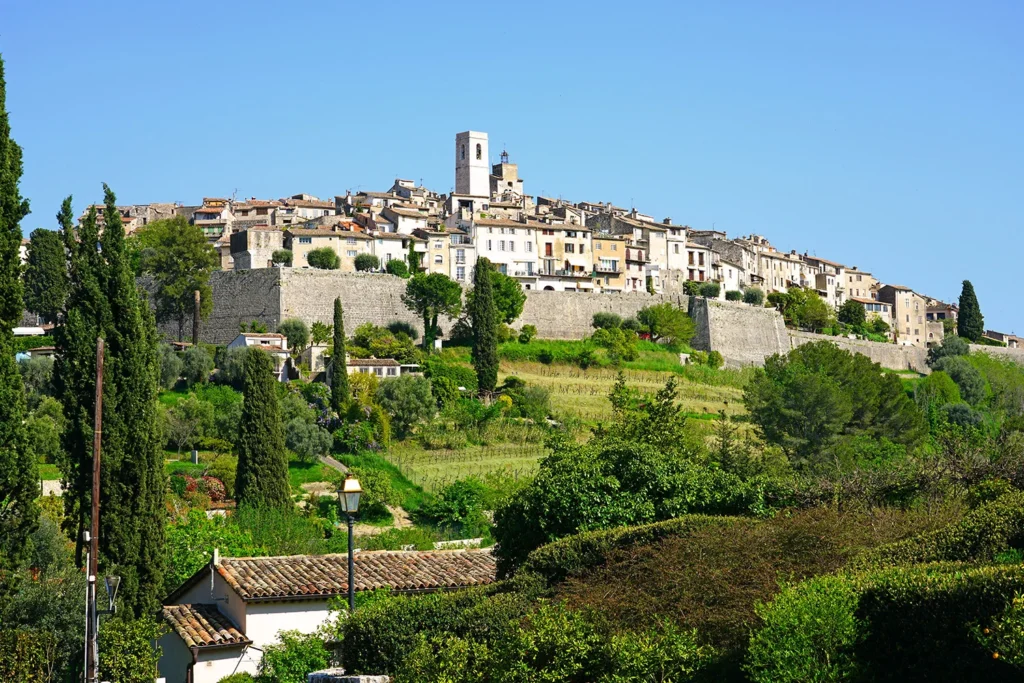
Unique Souvenirs from Saint-Paul-de-Vence
If you’re wondering what to bring back from your trip to Saint-Paul-de-Vence, be warned—the choice won’t be easy. The Old Town hides numerous small shops, each offering a different selection of goods. What’s more, many of these are original artisanal products that are hard to find in other cities. You’ll discover boutiques with jewelry, wonderfully fragrant soap shops, stores offering items made from local wood, and even food products.
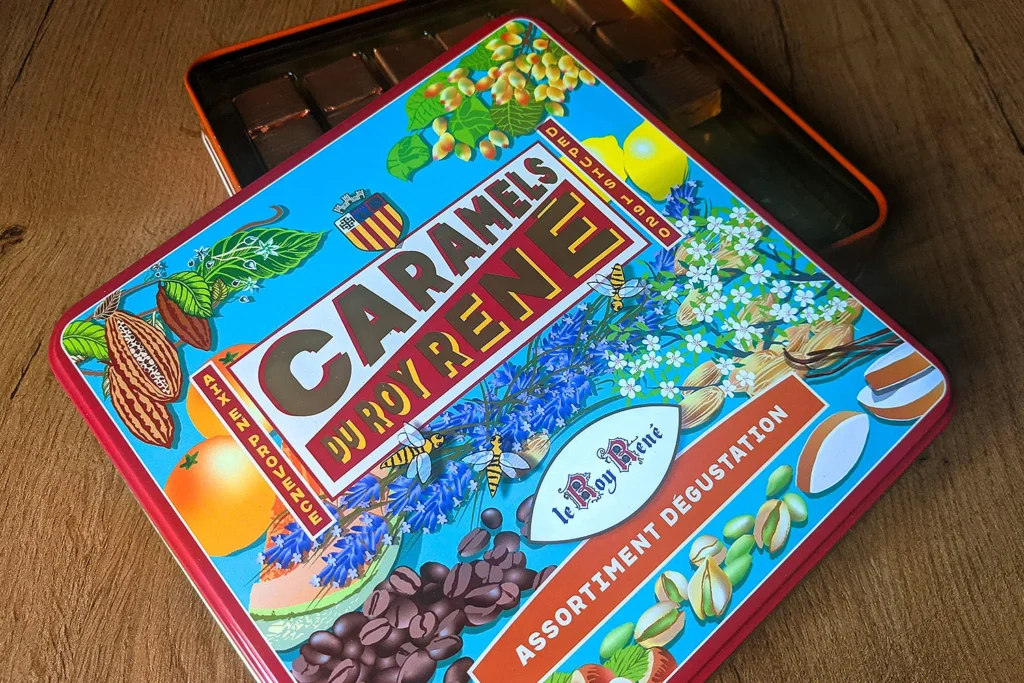
In the latter category, I particularly recommend visiting the shop Le Roy René. The interior of this place looks like something straight out of the movie Willy Wonka & the Chocolate Factory. The assortment includes various sweets – from multi-flavored caramels and Provençal nougat to sweet jellies and cookies, as well as flavored syrups and the popular southern French delicacy, calissons. All of this is beautifully packaged, making it a great gift idea as well.
GOOD TO KNOW: The Le Roy René brand also has stores in other cities in France (mainly in the south), including Nice, Antibes, Toulon, Marseille, and Aix-en-Provence.
What to visit around Saint-Paul-de-Vence
Less than 6 km from Saint-Paul-de-Vence lies the town of Vence, home to a distinctive Polish connection—Gombrowicz Museum. Opened in 2017, the museum is located in the villa where Witold Gombrowicz and his wife Rita spent the last years of his life (1964-1969). The Villa Alexandrine, maintained in the Belle Époque style, was restored with support from the Polish state. Fans of Gombrowicz can also visit his grave at the local cemetery.
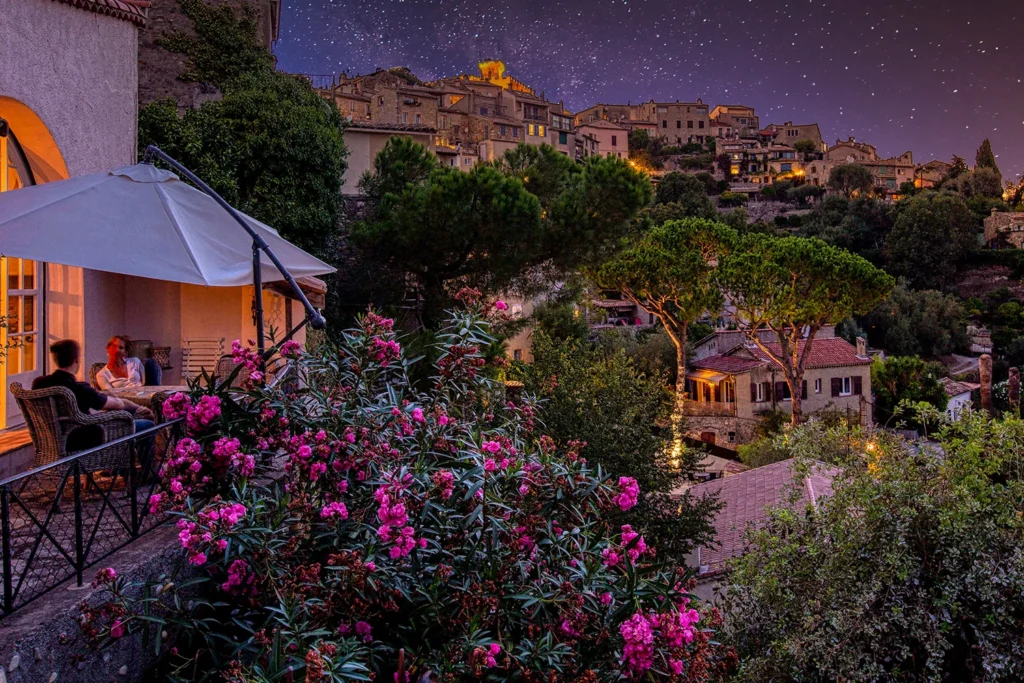
In the immediate vicinity of Saint-Paul-de-Vence is the town of Cagnes-sur-Mer, which is worth visiting for the Renoir Museum, Grimaldi Castle, and its charming Old Town. This town is also a favorite spot on the French Riviera for those looking to relax on the beach.
If you have a car during your holiday (which you can rent, for example, on RentalCars), another must-see destination is Grasse, located 22 km from Saint-Paul-de-Vence. Grasse is known as the world capital of perfume, and its main attractions include participating in perfumery workshops, visiting perfumeries such as Fragonard, Molinard, and Galimard, as well as the International Perfume Museum.